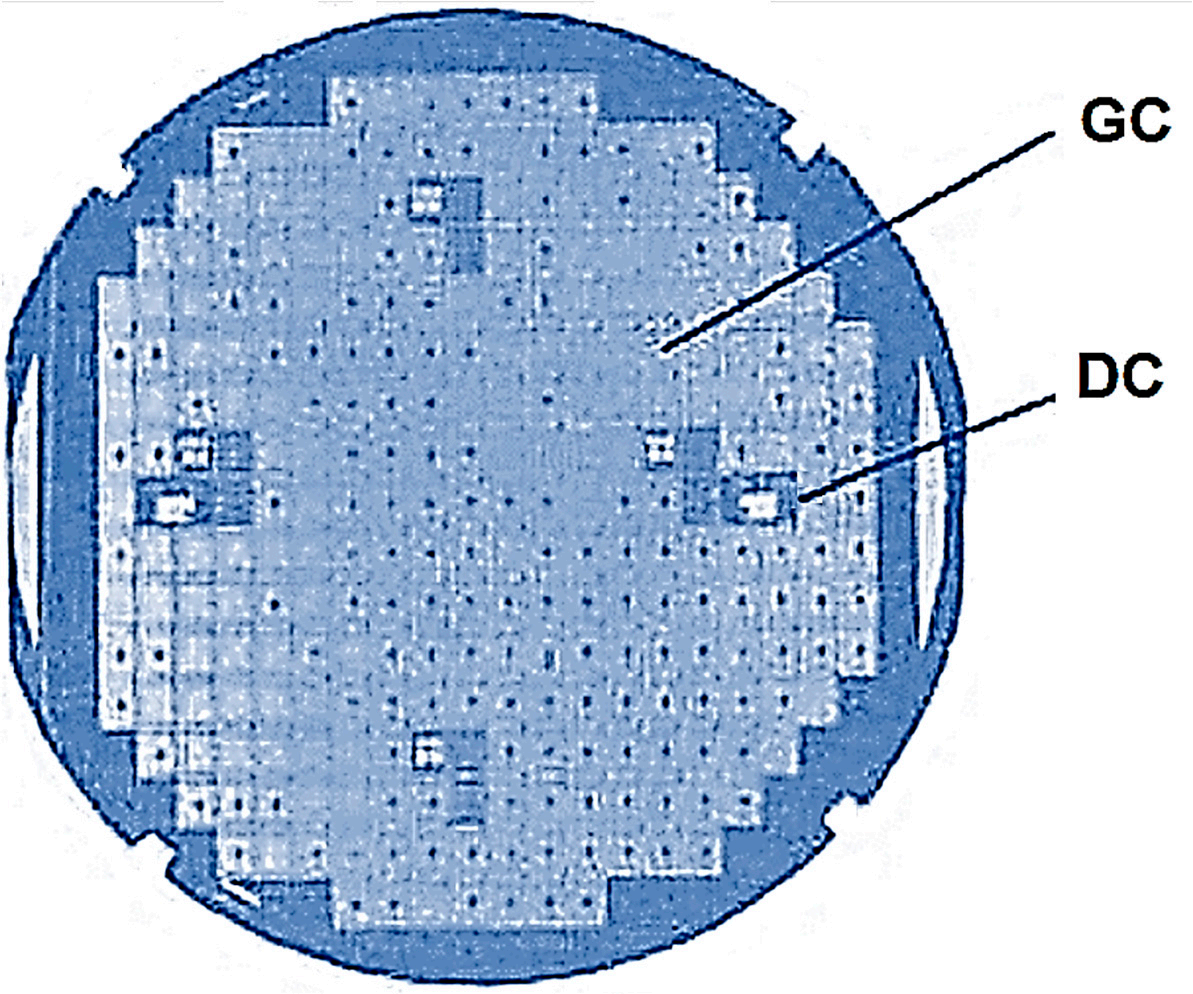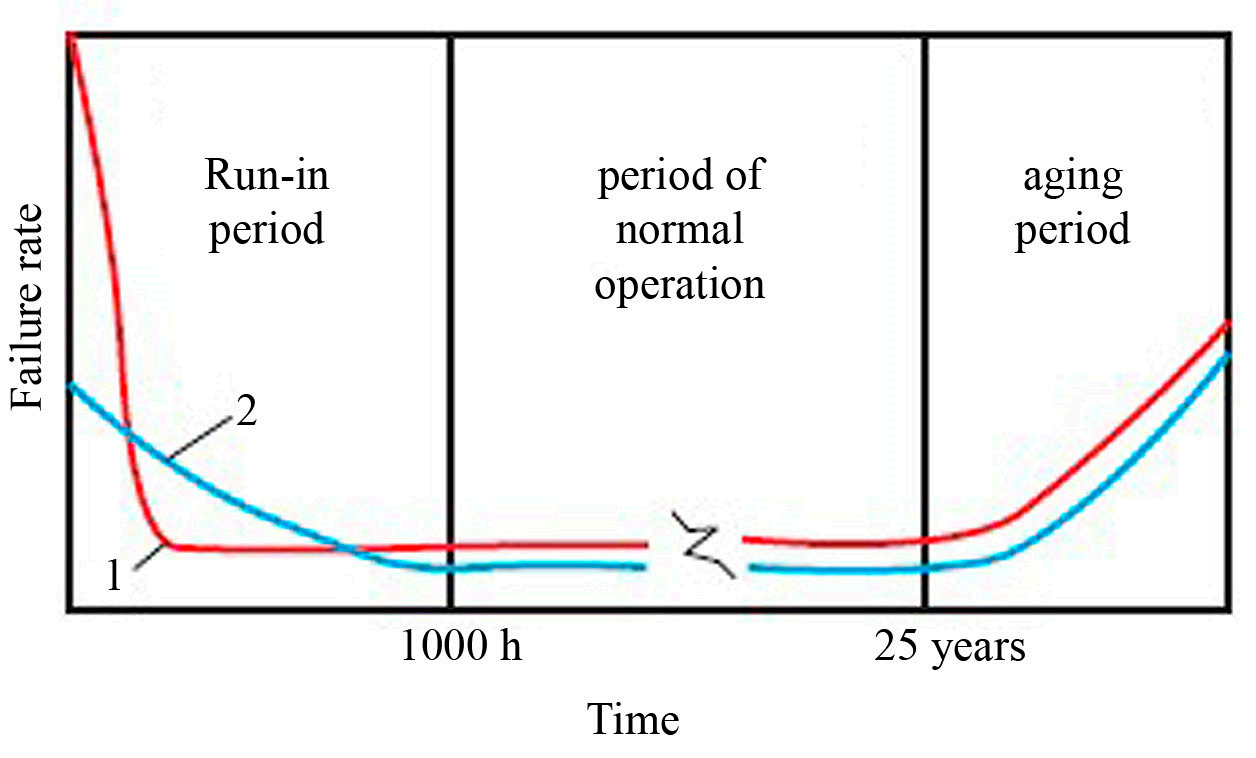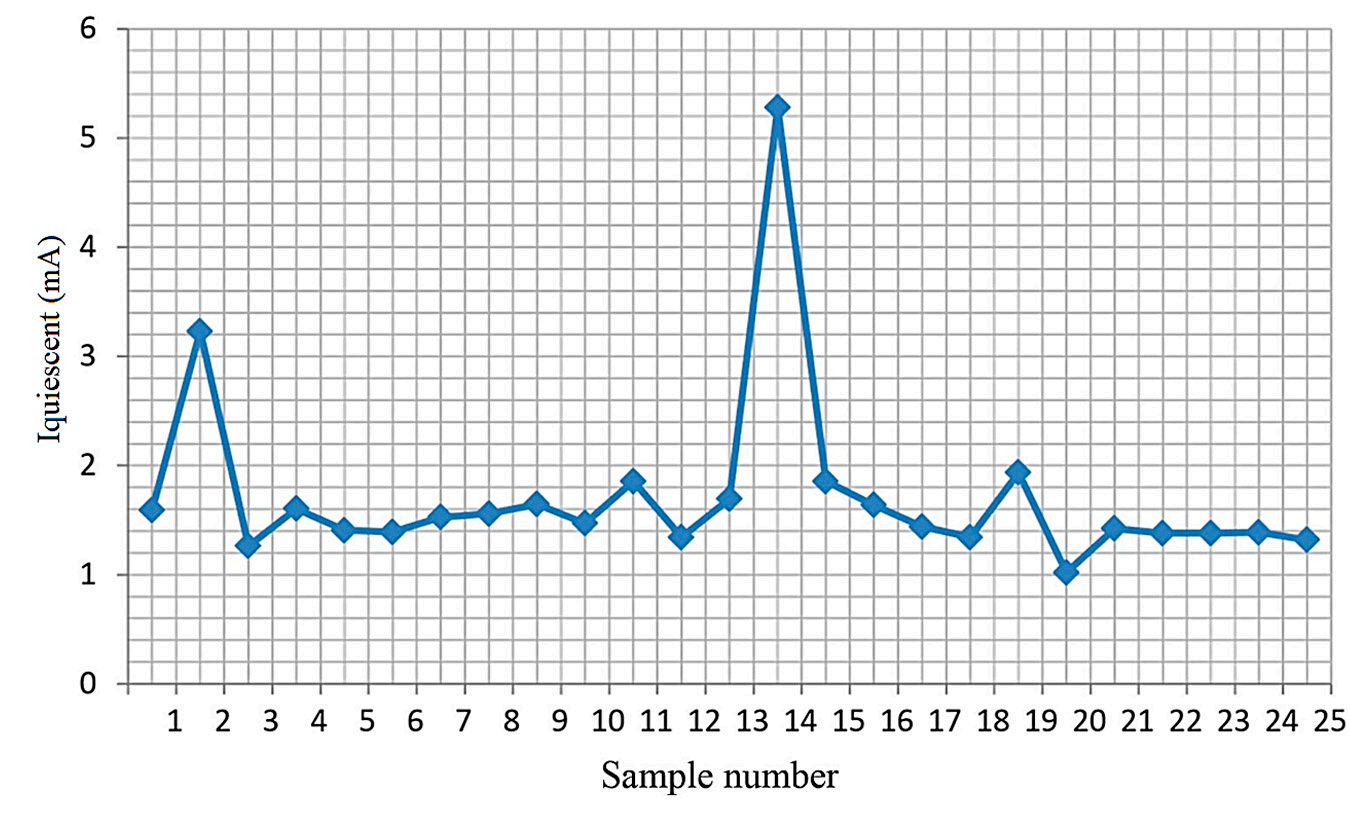Abstract: This paper is devoted to the study of CMOS IC parameter degradation during reliability testing. The paper presents a review of literature data on the issue of the reliability of semiconductor devices and integrated circuits and the types of failures leading to the degradation of IC parameters. It describes the tests carried out on the reliability of controlled parameters of integrated circuit TPS54332, such as quiescent current, quiescent current in standby mode, resistance of the open key, and instability of the set output voltage in the whole range of input voltages and in the whole range of load currents. The calculated values of activation energies and acceleration coefficients for different test temperature regimes are given. As a result of the work done, sample rejection tests have been carried out on the TPS54332 IC under study. Experimental fail-safe tests were carried out, with subsequent analysis of the chip samples by the controlled parameter quiescent current. On the basis of the obtained experimental values, the values of activation energy and acceleration coefficient at different temperature regimes were calculated. The dependencies of activation energy and acceleration coefficient on temperature were plotted, which show that activation energy linearly increases with increasing temperature, while the acceleration coefficient, on the contrary, decreases. It was also found that the value of the calculated activation energy of the chip is 0.1 eV less than the standard value of the activation energy.
1. Introduction
The development of microelectronics is caused by the constant growth of the degree of integration of integrated circuits, which in turn leads to an increase in the occurrence of failures of the element base of REA and a decrease in its reliability. Ensuring the quality and reliability of ICs is of particular importance since the characteristics of these products largely determine the tactical and technical characteristics of weapon systems. The pace of microelectronics development significantly complicates the task of predicting and assessing the quality of ICs. The requirements for the reliability of ICs are constantly increasing, as the requirements for the basic materials for the manufacture of microcircuits are currently tightened. Failures can occur during rejection tests, electrical testing, transport, storage, and application. At the same time, the design and technological design of microcircuits has been changing. All of this affects the physical and technical processes, the activation energy, and the nature of failures.
The problem of cumulative degradation of integrated circuits is quite acute, and it is important to determine the reasons for the deterioration of the parameters of integrated circuits and methods for increasing the reliability of circuits, both physical and technological. Diagnosing integrated circuits and testing them makes it possible to identify the reasons responsible for the deterioration of parameters, which is undoubtedly a key point in increasing the reliability of electronic equipment. Naturally, direct diagnostic methods and tools, based on a set of studies of the parameters of the integrated circuit (IC) itself, are more attractive since they directly allow one to judge the reliability of this circuit. However, not all reasons can be unambiguously established on the basis of direct methods only, so the search, development, and improvement of indirect methods with the use of additional tools and methods for diagnosing materials, technological processes, and operations is no less important. Determining the causes of failures and deterioration of IC parameters makes it possible to better monitor the process of rejecting low-quality circuits, as well as to develop new methods for increasing the reliability of ICs, relying on existing physical and technological methods. In this case, it is absolutely necessary to take into account the physical processes occurring in ICs, especially those based on composite materials.
On the plate subjected to contml experiments, areas with a high percentage of yearlycrystals, areas with a low percentage of such crystals, and sometimes areas with no yearlycrystals at all are highlighted (Figure 1).

Fig1
Certain areas on the wafer can have a low yield percentage not only because of exceeding the established permissible deviations of IC parameters associated with violations of manufacturing technology but also due to the fact that the design of the chip does not take into account the impact of possible deviations of IC parameters and the relationship between the deviations of various parameters.
Voltage converter integrated circuits used in switching power supplies are an integralpart of radioelectronic systems that are important for powering devices. The needfor the development of ICs is conditioned by reliability, import substitution, trends inimproving technical characteristics (speed, performance, reduction of power consumptionincreased resistance to special effects, etc.), and miniaturisation of developed products forvarious purposes.
A common way to improve the quality and reliability of a manufactured batch of semiconductor devices and integrated circuits is to carry out rejection tests or ETT (electrotermination) at the stage of output control at the manufacturing plant. Rejection tests are those tests that are performed at the production stage in order to identify and remove defective products.
It is assumed that there are no random failures of semiconductor products; each failure has a cause and is a consequence of the application of some load. “Weak” semiconductor products that remain undetected at the start of operation can cause failures of radioelectronic equipment (REA). For rejection testing to be effective, it is necessary to know what the loads are and how they accelerate the occurrence of failures. The experience of using integrated circuits in REA shows that the introduction of rejection tests significantly increases the average level of their reliability (Figure 5).

Fig5
Most semiconductor product failure mechanisms are accelerated by temperature and voltage or current, so during training, products should be operated at the maximum allowable voltage and maximum possible temperature. However, at this temperature, there should be no thermal overload, logic state changes, or unacceptably high current densities in the metallisation. Thermal overload must be avoided because otherwise, the semiconductor junction temperature cannot be controlled, leading to rapid product failure.
ETT is carried out on special stands under strict temperature control. The difference in the failure rate of devices in hermetic and plastic cases is explained by a greater number of cases of gate breakdown in the latter, which are more sensitive to static charges than devices in hermetic metal cases.

Fig6
Microcircuit failures are caused by changes in materials and structures as a result ofdegradation processes of different natures: electrical, radiation, thermal, and mechani.cal . Each type of degradation process can be responsible for the occurrence of differenttypes of failures. Failures can be categorised into the following types: crystal-relatedin leads and interconnects, sealing-related; and caused by external conditions and over.voltages. First of all, all failures are related to materials, process conditions, andoperations.
The nature of flow and the manifestation of these failures depends on the specifics of technology and is determined by the nominal operating modes of the circuit. In this regard, it is necessary to analyse the results of chip tests for failure-free operation and MTBF and electro-thermal training of the microcircuit under study in order to determine the possible types and causes of failures. Therefore, it is necessary to consider the possible methods of accelerated and experimental tests and to determine the methods of conducting studies of ICs. Failure control tests include short-term and long-term failure tests.
Abbreviated tests are those accelerated tests that take place without intensifying the processes that cause failure or damage. In abbreviated tests, in order to reduce the time required to obtain reliability indices, it is necessary to predict the behavior of the test object for a period longer than the duration of the test. Accelerated tests, on the other hand, are accelerated tests that are based on the intensification of processes that cause failure or damage. In accelerated tests, a special increase in the rate of loss of serviceability of the product is carried out.
上一篇: GaN和相关异质结的金属辅助化学蚀刻
下一篇: HF 基多孔硅电化学蚀刻溶液研究